Exhibits
Modern Southern Females
Detectives and Their Authors
Historians generally date the first mystery novel written by an American woman to the year 1866. The Dead Letter by Mrs. Metta Victoria Fuller Victor features the character Richard Redfield and a mysterious letter found in the New York dead letter office. The letter leads Redfield into the world of policemen and hired assassins and ends with Redfield exposing the murderer and rescuing his ladylove. From these distinctly melodramatic beginnings the history of women mystery authors in America evolved. By the 1970s women detective novels had established a hold on the genre in earnest with the mass success of authors such as Sara Paretsky and Sue Grafton. Other subgenres of the mystery market: the police procedurals, the thriller, the “cozy” became fair game for women authors. Julie Smith, Nevada Barr, and Carolyn Haines all trace their heritage from the early days of American female mystery writers.
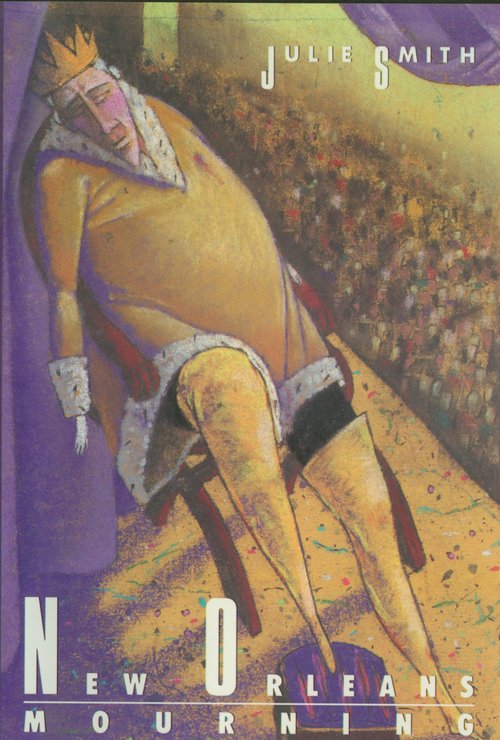
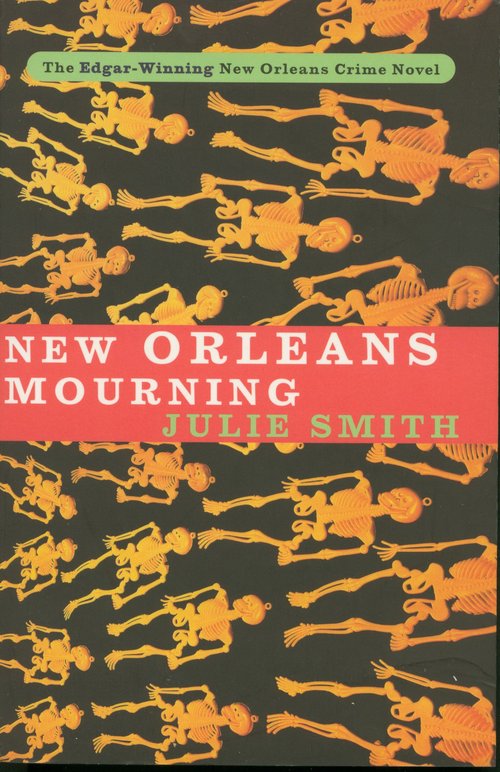
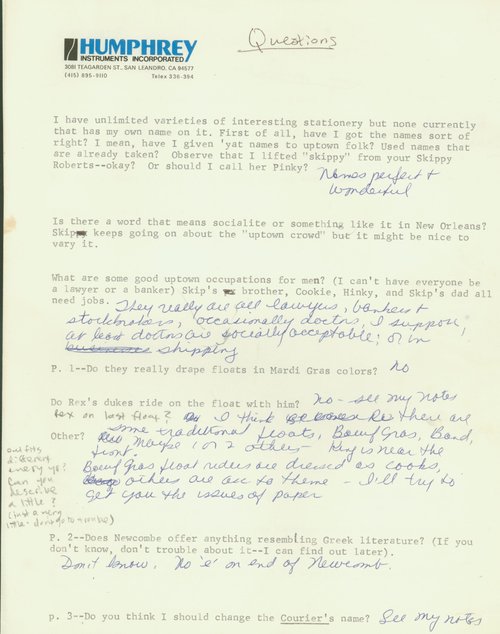
Julie Smith
Julie Smith, a native of Savannah, Georgia, attended the University of Mississippi majoring in journalism. After college Smith worked as a journalist at the New Orleans Times-Picayune but soon moved to San Francisco and the Chronicle. The author of a successful San Francisco based mystery series centered around lawyer Rebecca Schwartz, Smith began publishing the New Orleans Skip Langdon series in 1989 with the Edgar-winning work, New Orleans Mourning. Skip, a physically powerful New Orleans cop outnumbered in a world of male policemen and estranged from her socially prominent New Orleans family, embodies the classical ideal of alienation. In a June 2001 interview for the online journal Writers Write, Julie Smith described how this alienation sprang from her own life:

“When I was young I always heard that Southern writers always write about the South-eventually. However, I never thought that applied to me because I never understood my hometown and never fit in. So how was I going to write about it…one day it came in a blinding flash—I could work with a character who was as alienated as I was. And thus was Skip Langdon born!”
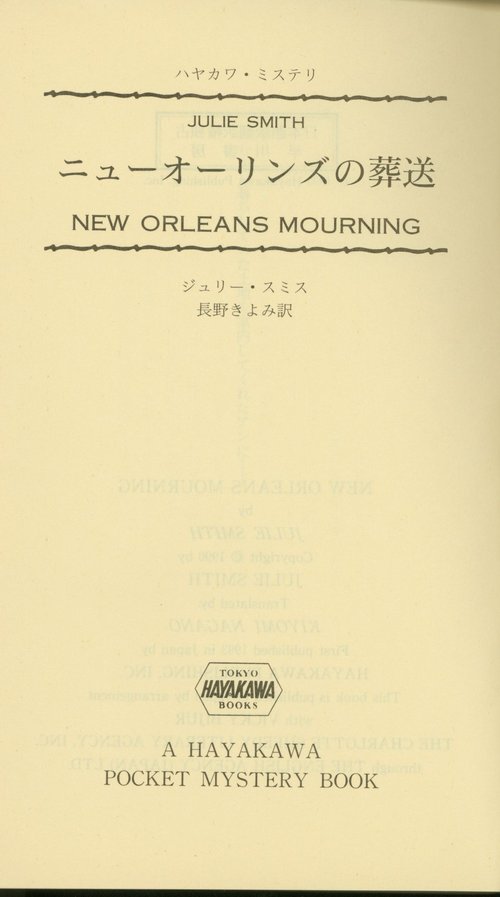
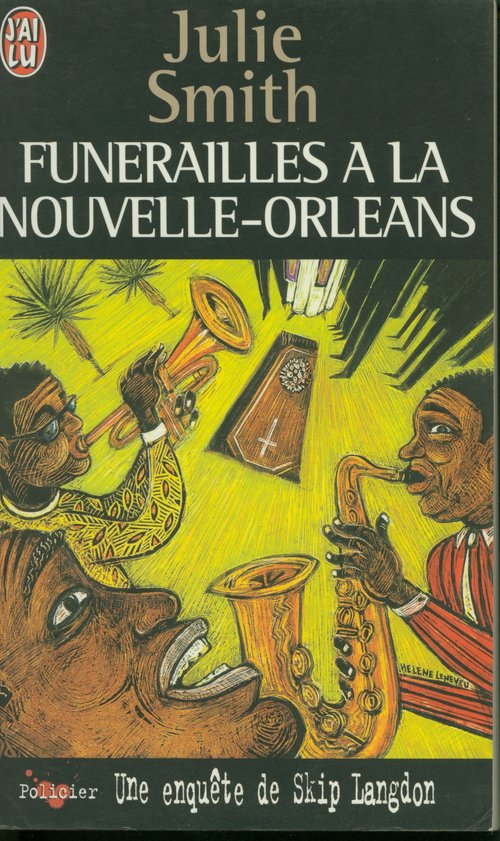
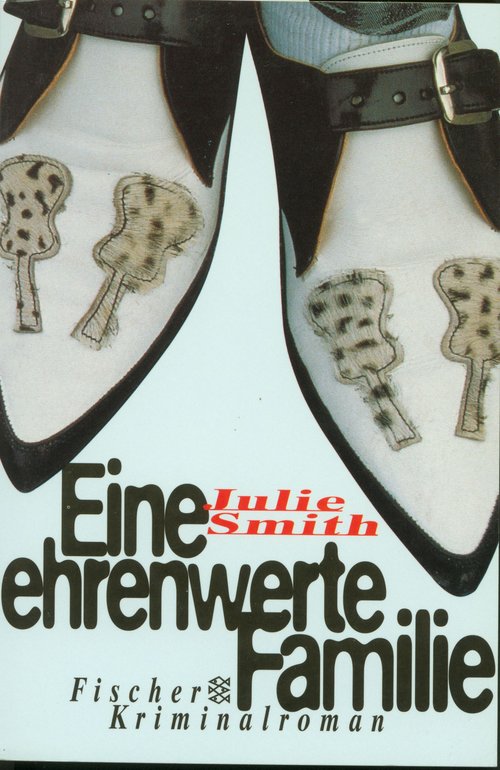
All of Smith’s characters are intricately written and eerily lifelike. For example, Skip’s arch enemy since The Kindness of Strangers, Errol Jacomine, exhibits the evil controlling nature that Smith noticed in cult leader Jim Jones after meeting him during her days at the San Francisco Chronicle. She remembered Jones made “my scalp prickle” and she later “gave the experience to my detective, Skip Langdon.” The Baronness of Pontalba or “Talba,” a character from 82 Desire, was not in Smith’s words, “going to be satisfied with the bit part she got the first time” and was given her own series in Louisiana Hotshot. Her mother “Miz Clara” was based around a poem Smith heard one Sunday in the French Quarter of New Orleans by Mada Plummer written about her mother.

Julie Smith. New Orleans Mourning. New York: St. Martin’s Press, 1990.
-- New Orleans Mourning. London: Slow Dancer Press, 1998.
-- Typed document. [c.1990]. Typed questions from Julie Smith to unknown recipient regarding New Orleans Mourning. 1p.
-- New Orleans Mourning. Tokyo: Hayakawa, 1993. (Japanese translation)
-- Funerailles à la Nouvelle Orléans. Translated by Isabelle St. Martin. Paris : Editions J'ai lu, 1999. (French translation of Jazz Funeral)
-- Eine ehrenwerte familie: kriminalroman. Frankfurt am Main: Fisher, 1997. (German translation of House of Blues)
-- Louisiana Hotshot. New York: Forge, 2001.
-- Press identification card, New Orleans Department of Police. (side 1, side 2)
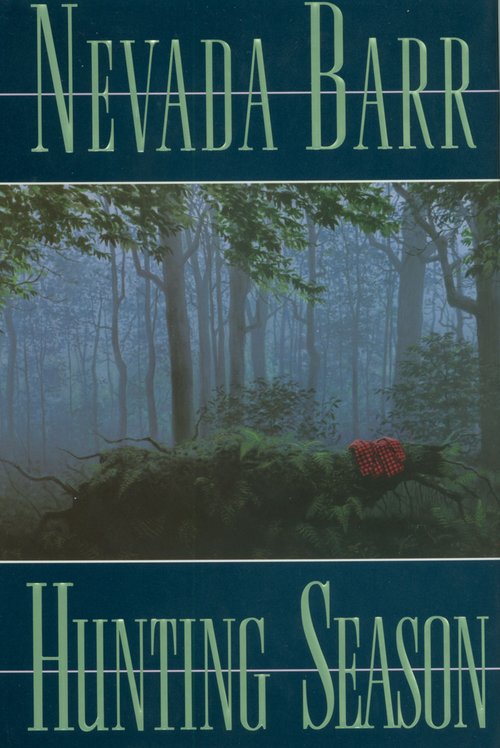
Nevada Barr
Nevada Barr clearly attributes a portion of her success to the earlier efforts of women authors and their female detectives. In an online interview for Doubleday’s website “The Mystery Guild,” she said, “I think that Sue Grafton and Sara Paretsky laid the groundwork and started a golden age for women sleuths and by sheer dumb luck I walked into the middle of it.” Barr’s character, Anna Pigeon, builds closely on the traditions of those who have gone before with a new emphasis on landscape and environment. Pigeon, a National Park Ranger, favors straight talk and action tempered with thoughtful decision making. Barr’s plots revolve around Anna’s work in various national parks and the powerful combinations of the beauty and wildness of their landscapes superimposed with human frailty, emotion, and murder. Her first mystery, the 1993 novel Track of the Cat, received the coveted Agatha Award sponsored by Malice Domestic, Ltd. and the Bouchercon World Mystery Convention’s Anthony Award for best first mystery novel. Since that time her works have won numerous other awards and captured a loyal following of readers. Although not a native Mississippian, Barr has lived and worked within the state since her transfer as a Park Ranger to the Natchez Trace Parkway. Barr uses this location as a setting for two of her most recent works (Deep South and Hunting Season) marking the first time the author has set two mysteries in the same place. She reiterates that this does not mean Anna is settling down.
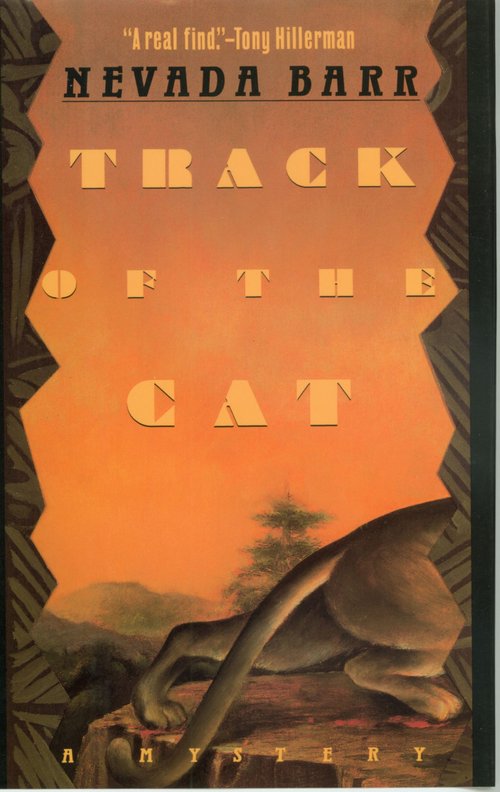

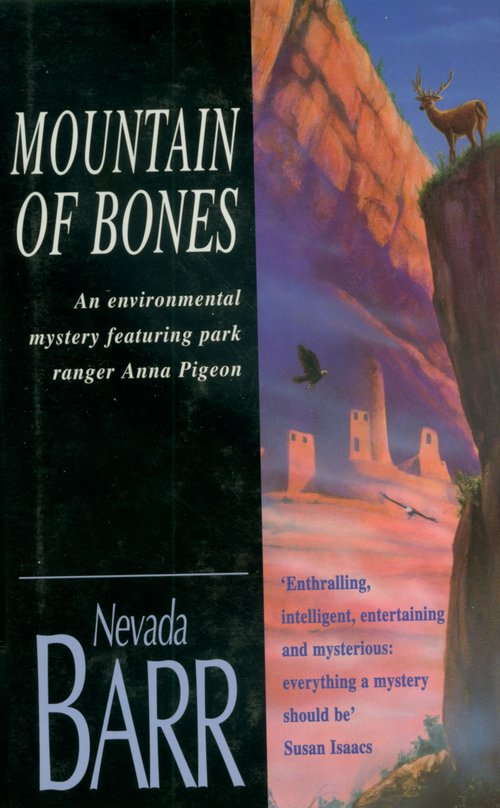
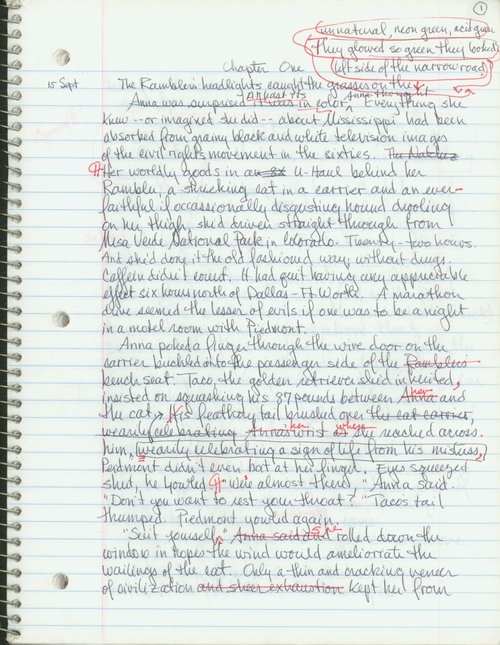
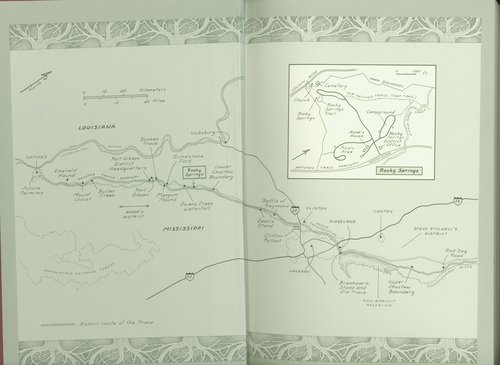
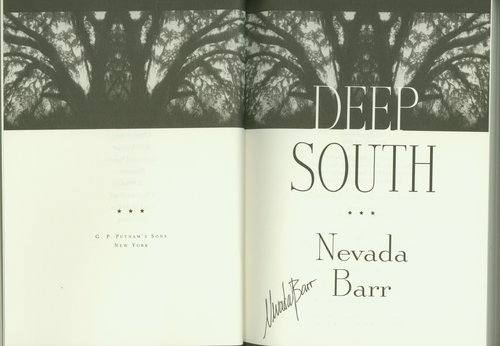
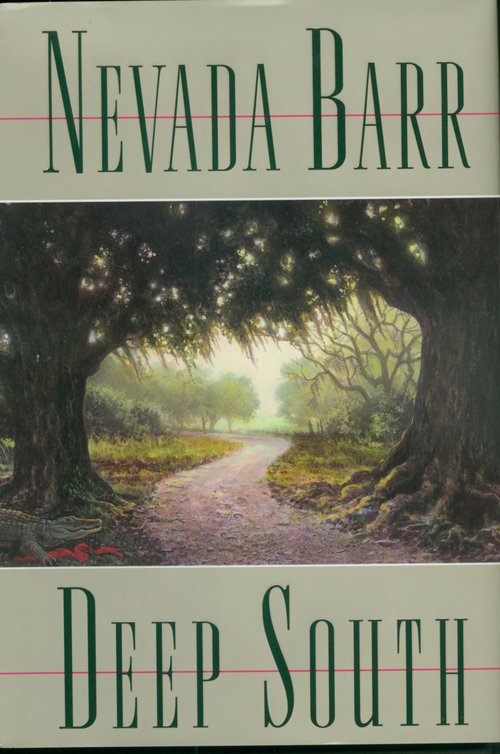
Nevada Barr. Track of the Cat. New York: G.P. Putnam’s Sons, 1993.
-- Title page for Deep South. New York: G.P. Putnam’s Sons, 2000. Signed by author.
-- Autograph manuscript signed. [c. 2000]. Front cover of the first notebook containing the original handwritten manuscript of Deep South.
-- Autograph manuscript signed. [c. 2000]. First page of "Deep South I", the first of several notebooks containing the original handwritten manuscript of Deep South.
-- Deep South. New York: G.P. Putnam’s Sons, 2000. End papers.
-- Firestorm. New York: G.P. Putnam’s Sons, 1996.
-- Mountain of Bones. New York: G.P. Putnam’s Sons, 1995.
-- Hunting Season. New York: G.P. Putnam’s Sons, 2002.
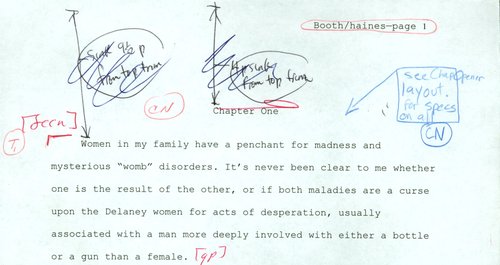
Carolyn Haines
Born in Hattiesburg, Mississippi, on May 12, 1953, Carolyn Haines graduated from high school in George County. She received a B.S. from the University of Southern Mississippi in Journalism and a M.A. in English with an emphasis in Creative Writing in 1985 from the University of Southern Alabama. Carolyn Haines’ first published novel, Summer of Fear , appeared in 1993 with Summer of the Redeemers following in 1994. Her popular detective series featuring the feisty Southern belle detective Sarah Booth began in 1999 with the publication of Them Bones followed by Buried Bones, Splintered Bones, and Crossed Bones.
The quality of Haines’ work in relation to the South and its’ lands is evident through her Bones series. When asked about this connection the author replied:
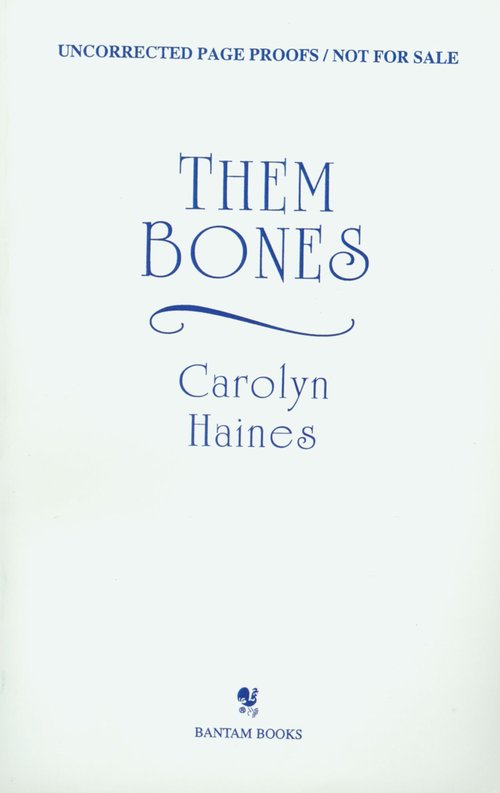
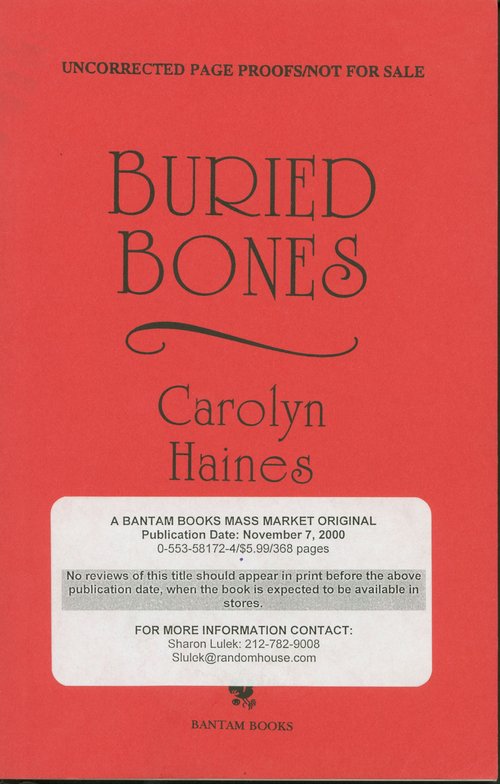
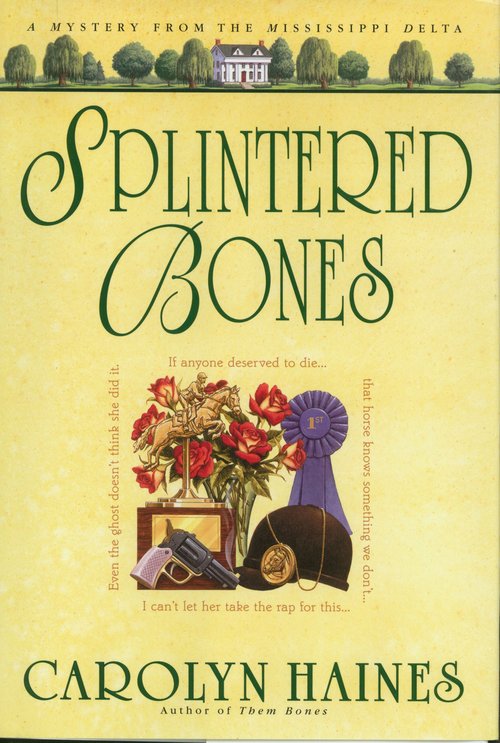
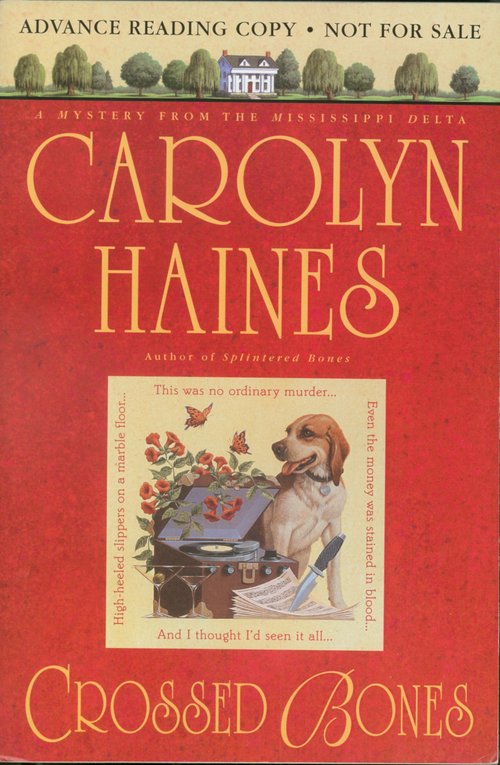
You can take my characters out of the South--but no, you really can’t.
Growing up in Mississippi has shaped my character, and it constantly shapes the character of my characters. I think ‘place’ is one of the strongest elements in fiction. It grounds the reader and gives characters a source. I may have had the last golden childhood, growing up in Lucedale, Mississippi. We played without fear, and we were surrounded by country and woods. It was a paradise. I grew to love the outdoors, the plants, the animals, and the people of my world. I was fortunate in that I met quite a few characters during my journalism days, which has helped me create my fictitious world. I have been truly blessed to live in a place which hasn’t yet been homogenized to look and sound just like everywhere else.
Mississippi is a writer’s dream.
Carolyn Haines. Them Bones. New York: Bantam Books, 1999. Uncorrected page proofs.
-- Typewritten Manuscript. [c.1999]. First page from original annotated manuscript of Them Bones.
-- Buried Bones. New York: Bantam Books, 2000. Uncorrected page proofs.
-- Splintered Bones. New York: Delacorte Press, 2002.
-- Crossed Bones. New York: Delacorte Press, 2003. Advance reading copy.
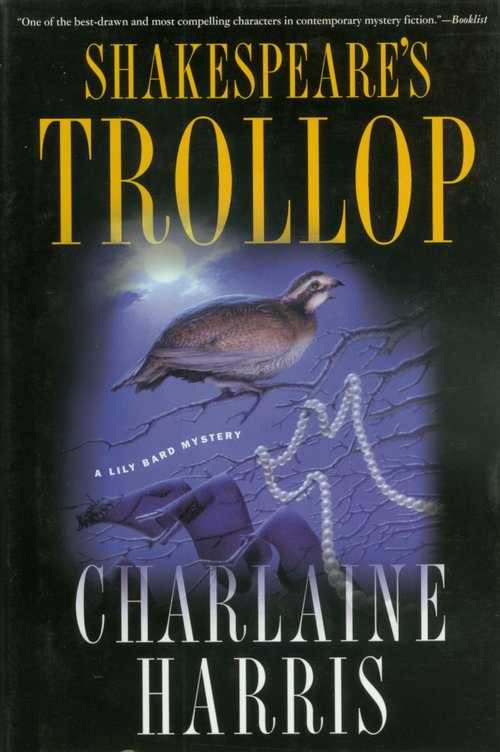
Charlaine Harris
In their work on the southern detective, J. K. Van Dover and John F. Jebb elegantly described the connection between place and family for Southern mystery authors:
Southerners know the history of their family as well as of their place and of the relationships between the two histories. Such knowledge is both a comfort and a burden.
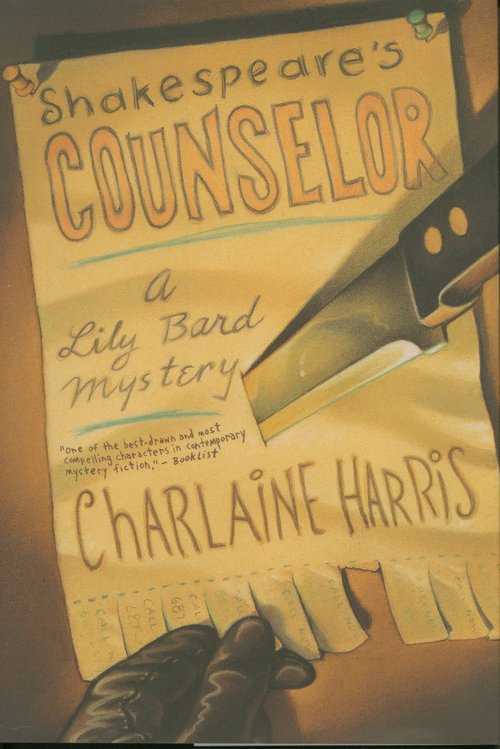

This sentiment applies well to the characters from the Tunica, Mississippi-raised mystery author Charlaine Harris, for Harris has created several series dominated by Southern women who feel deep ambivalence towards their family, history, and community. In her delightfully light Aurora Teagarden series, the main character is a feisty librarian “Roe,” who finds herself in the most untenable situations such as bodies falling from the sky into her yard and the like.
The intriguing yet darker character of Lily Bard appears in the “Shakespeare” series. Lily, the victim of a brutal rape and torture, has abandoned her connections with her life in Memphis, Tennessee and moved to the small town of Shakespeare, Arkansas. Determined to cut herself off mentally from the world, Lily focuses on martial arts and bodybuilding while cleaning the homes of specifically chosen clients. Although wanting to live on the fringes of society, Lily is continually drawn into the life of Shakespeare through foul play. As the series progresses her attachment to the quirky characters and eccentric lifestyle of the town only increases.
Charlaine Harris. Shakespeare’s Trollop: A Lily Bard Mystery. New York : St. Martin's Minotaur, 2000.
-- Shakespeare’s Counselor: A Lily Bard Mystery. New York: St. Martin’s Minotaur, 2001.
-- Real Murders: A Walker Mystery. New York: Walker, 1990.
